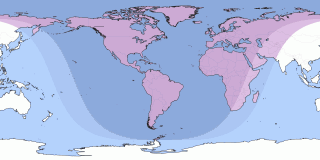Jan 12, 2028 at 4:13 pm
Max View in 61°38'53.7"N, 166°15'49.6"E
| Global Event: | Partial Lunar Eclipse |
|---|---|
| Local Type: | Partial Lunar Eclipse, in 61°38'53.7"N, 166°15'49.6"E |
| Begins: | Wed, Jan 12, 2028 at 3:40 pm |
| Maximum: | Wed, Jan 12, 2028 at 4:13 pm 0.066 Magnitude |
| Ends: | Wed, Jan 12, 2028 at 6:18 pm |
| Duration: | 2 hours, 38 minutes | All times shown on this page are local time. |
Eclipses and Transits Visible in 61°38'53.7"N, 166°15'49.6"E
| Eclipse Visibility From 61°38'53.7"N, 166°15'49.6"E | Visibility Worldwide | ||
|---|---|---|---|
| Mar 3–4, 2026 Total Lunar Eclipse | Total Lunar Eclipse |  | |
| Aug 13, 2026 Partial Solar Eclipse | Total Solar Eclipse |  | |
| Aug 17, 2027 Penumbral Lunar Eclipse | Penumbral Lunar Eclipse |  | |
| Jan 12, 2028 Partial Lunar Eclipse | Partial Lunar Eclipse |  | |
| Jan 1, 2029 Total Lunar Eclipse | Total Lunar Eclipse |  | Note: Click on the date link for details in 61°38'53.7"N, 166°15'49.6"E, or the path map image for global details. Currently shown eclipse is highlighted. |
Next total solar eclipse visible in 61°38'53.7"N, 166°15'49.6"E
Next annular eclipse visible in 61°38'53.7"N, 166°15'49.6"E
